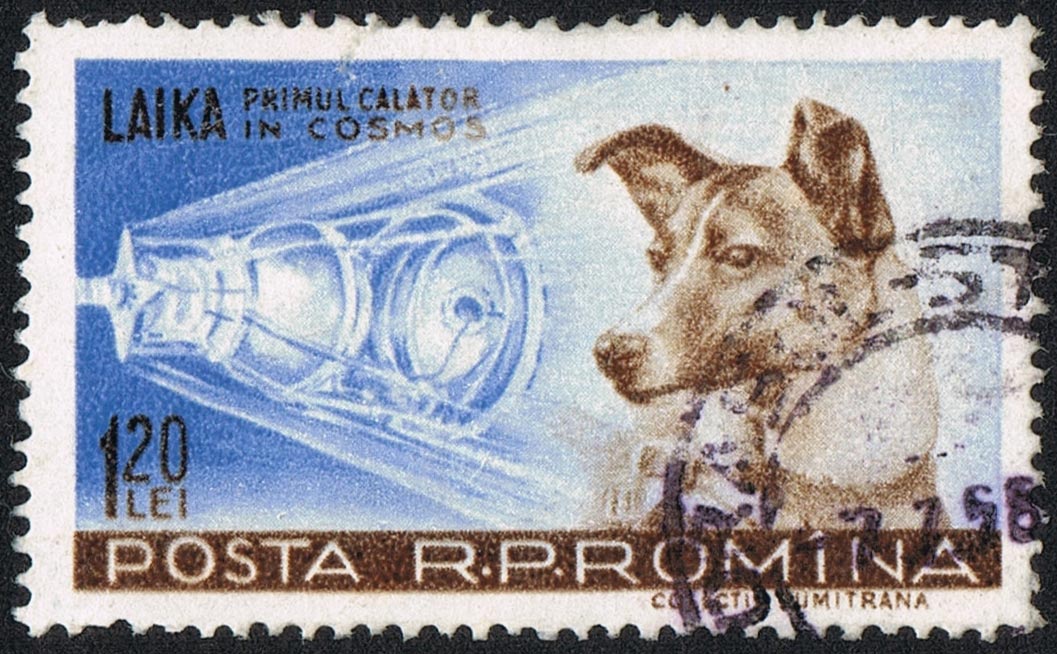The first Earthling in space wasn’t human. Not counting microbes, this first Earthling was a Russian mongrel found on the streets of Moscow. Laika the dog was launched into space on November 3rd, 1957, but didn’t make it back alive to enjoy her fame. Officially, she ran out of oxygen. After the fall of the Soviet Union, it was revealed she died of stress and overheating. Afterwards, her craft, Sputnik II, disintegrated on reentering the atmosphere. “Laika” wasn’t even her actual name; it was Kudryavka, meaning Little Curly; in the U.S. she was sometimes known as Muttnik.
The U.S. had actually been the first nation to launch an animal towards space: in 1948, a rhesus monkey named Albert 1 was the payload on a captured German V-2 fired from White Sands, New Mexico. Unpublicized, Albert died of suffocation during the flight. But Laika made it into orbit alive, a historic feat, and became a cultural phenomenon. Recent poems by Charles Bennett and Patti White testify to Laika’s continuing place in collective memory.
In the space race, the U.S. preferred rhesus, squirrel, and pig-tailed monkeys, as well as chimpanzees, while the Russians worked with female dogs (they found that waste disposal was easier with the females.) These experimental subjects were used to see how humans might respond to spaceflight, particularly to the effects of radiation and weightlessness.
In the late 1960s, as humans approached the Moon, U.S. “space monkey” experiments continued; the man in charge of them, Dr. W. Ross Adey, was scathingly dismissive about earlier efforts, saying they “scarcely warranted the name of an experiment.”
Besides dogs and monkeys, other animals used in space experiments included mice, rats, rabbits, cats, turtles, fruit flies, frogs (eggs, tadpoles, adults), newts, fish, jellyfish, amoeba, and spiders. In the early 1960s, “more than 15,000 animals a year” were involved in space medicine research, most of it ground-based. The culmination of these tests was a 1998 space shuttle mission, which included over 2000 creatures, along with the seven human crew, who supervised 16 days of neurological testing. But the 1970s, animal deaths—particularly of mammals—in space exploration had become controversial. The ethics of animal testing in space, as well as here on Earth, have been debated since.
So let’s remember this plucky mutt, trapped in what became her coffin 57 years ago. A human achievement at the expense of a non-human. Earthlings, bound together like the double star of Sirius, the Dog Star.







